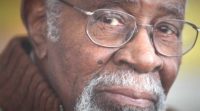Atlanta has long been an epicenter of the civil rights movement, and the hometown of many of its most influential figures. The Southern Christian Leadership Conference was founded here in 1957; the Student Nonviolent Coordinating Committee staged sit-ins at Atlanta department stores in 1960; and the city is the birthplace of Martin Luther King, Jr.
The Freelon Group was chosen to design the new Center of Civil & Human Rights in Atlanta.
When it opens in 2012, the Center of Civil & Human Rights (CCHR) will commemorate Atlantans’ and Georgians’ role in securing equality for African Americans, and serve as a venue for contemporary efforts in the field of human rights.
On March 26, CCHR announced that it selected the Durham, North Carolina–based The Freelon Group as the designer of the forthcoming $125 million facility. HOK will be the architect of record. A 12-person jury selected the winner from a shortlist of five teams.
The 100,000-square-foot building will be located in Pemberton Place, a 20-acre public space currently anchored by the World of Coca-Cola and the Georgia Aquarium, just north of Centennial Olympic Park. The center includes galleries, administration, storage, and retailing functions, as well as an auditorium and outdoor amphitheater for public events. Philip Freelon, FAIA, says the venue will serve as a “crossroads of conversation about civil and human rights.”
Freelon’s design features two cantilevering arms “derived from an image of people of varying cultures and backgrounds uniting in solidarity.” The building’s textured skin is composed of terracotta panels that attach to the structure in a manner similar to a rain screen. Large windows in both arms provide glimpses into the CCHR’s multifaceted program. Visitors to Pemberton Place will look through one such opening in the southwest corner, where rotating video displays will be projected onto an interior-mounted scrim. Catty-cornered from it, another expanse of glass frames the King Papers—an exhibition of Martin Luther King, Jr.’s manuscripts, correspondence, and other written works—and overlooks the historically African-American neighborhood Sweet Auburn.






Post a comment to this article
Report Abusive Comment